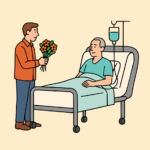Book Appointment Now

Management of Pain in Severely Injured Patients
Effective management of pain in severely injured patients is a critical component of trauma and acute care nursing. Pain not only affects a patient’s physical well-being but also impacts their recovery trajectory. Nurses play a key role in assessing, treating, and monitoring pain levels to ensure that patients receive appropriate and timely relief. This article delves into the strategies and best practices for managing pain, with an emphasis on the nursing perspective.
Do you need nursing paper writing help regarding management of pain in severely injured patients?![]()
The Importance of Pain Management in Trauma Care
In trauma care, pain management is vital for both immediate and long-term recovery. Uncontrolled pain can lead to complications, such as increased stress response, delayed healing, and psychological distress. For nursing professionals, managing pain in patients with severe injuries requires a combination of clinical skills, understanding of analgesic protocols, and a patient-centered approach.
Impact of Severe Pain on Recovery
Pain from severe injuries can complicate the healing process. Acute pain can exacerbate inflammatory responses, impair immune function, and increase the risk of chronic pain development. Nursing care focuses on minimizing these risks through prompt and effective pain relief strategies.
Pain Assessment in Severely Injured Patients
A comprehensive pain assessment is the cornerstone of effective pain management. Nurses must be adept at using standardized tools to evaluate pain intensity, duration, and characteristics, especially in patients who may be non-verbal due to their injuries.
- Using Pain Scales
Nurses rely on tools like the Numeric Pain Rating Scale (NPRS) or the Visual Analog Scale (VAS) to quantify pain. In trauma settings, rapid assessment ensures timely interventions, which are essential for minimizing suffering. - Assessing Non-Verbal Cues
In cases where patients are unable to communicate due to their injuries, nurses must look for non-verbal signs of pain, such as facial expressions, increased heart rate, and agitation. This is especially critical in acute care where communication barriers may exist.
Key Pain Management Strategies in Trauma
Effective pain management in trauma patients involves a multimodal approach that integrates pharmacological and non-pharmacological methods. Nurses must collaborate with the wider healthcare team to ensure that patients receive appropriate interventions.
Pharmacological Pain Management
- Opioids for Severe Pain
Opioids like morphine and fentanyl are commonly used to treat severe pain in trauma patients. Nurses monitor the patient for side effects such as respiratory depression, ensuring safe and effective use of these potent analgesics. - Non-Opioid Analgesics
Non-opioid medications like NSAIDs (non-steroidal anti-inflammatory drugs) and acetaminophen can be used in combination with opioids to reduce pain and limit opioid-related side effects. Nurses must understand the indications and contraindications for these drugs in trauma care.
Non-Pharmacological Interventions
- Cold and Heat Therapy
Nurses may implement cold therapy to reduce inflammation and numb the area of injury, followed by heat therapy to improve circulation and relieve muscle tension. - Positioning and Immobilization
Proper positioning of injured limbs or areas, along with immobilization devices like splints, can significantly reduce pain. Nurses play a vital role in maintaining the correct positioning for comfort and healing.
Nursing Considerations in Pain Management
Nurses caring for trauma patients must not only manage physical pain but also address the emotional and psychological aspects of pain. Patient-centered care is essential to ensure that patients feel heard and supported throughout their recovery.
Emotional Support and Education
- Providing Reassurance
Pain from trauma can cause anxiety and fear. Nurses must provide continuous emotional support, reassuring patients that their pain is being effectively managed. - Patient and Family Education
Educating patients and their families on pain management plans fosters a sense of control and helps them participate in decision-making. This holistic approach ensures better compliance and satisfaction with care.
Effective management of pain in severely injured patients is critical to their overall recovery in trauma and acute care nursing settings. Nurses play an integral role in assessing, treating, and monitoring pain through a combination of pharmacological and non-pharmacological strategies. By prioritizing timely and patient-centered pain relief, nurses can significantly improve outcomes and enhance the quality of care for trauma patients.
Also read:
Case Study on Pain Management essay assignment







